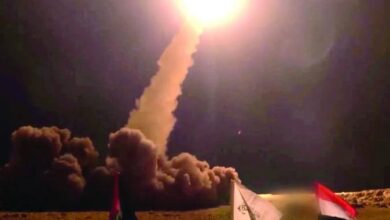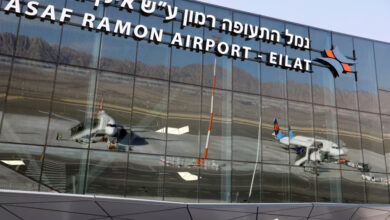Sanaa — Twenty-year-old protester Mohammed sits near his tent at Sanaa University, reading Sahat Al-Tagheer (The Square of Change). The newspaper, named after the square where protesters have camped for more than two months to demand the ouster of the Yemeni President Ali Abdullah Saleh, is not an official publication. It is produced in the square by the protesters themselves.
When Yemenis first began their sit-in, they created different committees to organize themselves. Those bodies included security, organization, security, medical and media task forces. Adel Alsurabi was part of the first media committee at Tagheer.
“Our first role was to prepare the different events organized, work on the program for the stage, and share the news with all the people here,” said Alsurabi.
The 150 people that comprise the Tagheer media committee hail from different backgrounds and claim no political ties. They aim to present objective, neutral news of developments in the embattled Arab nation.
“We are reading all official newspapers and trying to counter the propaganda,” Alsurabi said.
Since the late January beginning of the Yemeni uprising, TV channels and newspapers of both the government and opposition launched a media war that has escalated with time. While the latter often accuses thugs affiliated with the Joint Meeting Parties (JMP), the country’s main opposition coalition, of killing protesters, the former periodically exaggerates demonstration turnout figures.
Conflicting coverage in Yemen abounds. A notable example is the famous young girl who delivered an opposition-broadcasted, teary-eyed speech about her martyred father on stage at Tagheer Square. State TV countered by interviewing the young girl’s purported mother and father. Opposition television then interviewed the mother who denied the state TV account.
An example such as this encouraged Tagheer’s youth to create a third voice they claim accurately reflects the truth.
“We want to give a voice to the people here, a voice which could be heard inside but also outside the different squares of change and freedom in the country,” added Essam al-Gadassy, member of the Khalass (Enough) movement.
The square is an arena for change for the future of one of the Arab World’s poorest countries. It is becoming now a complete city in itself with its own shops, activities, tents and, now, its own media outlets. More than 30 newspapers are published and distributed at the square, including at least four dailies. Those involved in the rapidly-growing newspaper scene envision the role of unbiased media as a critical long-term component to future of Yemen.
“We wanted to document everything that is happening at the square, with pictures and news, and share with Yemenis and those abroad,” says Amin Alshami, media officer in charge of Sahat Al-Tagheer, published by the Free Coalition for Change.
Targeting Western nations is a goal shared by most involved with the emergent industry. Alsurabi, from the media committee, regularly works with foreign correspondents in Yemen. Some newspapers strive to show Yemen differently, in light of its often negative portrayal in the international media.
Some of the newspapers also inform Yemenis of international influence in their country.
“In almost every issue, there is an article about the role of the US in Yemen, sometimes showing how, by supporting the regime, they keep making more enemies here,” says a media officer from the Youth Standing firm movement.
And these media committees do not only publish the newspapers. They also work from home on the web with volunteers to spread news quickly by posting articles on the goals and morals of the revolution. They also organize awareness seminars.
Most of the volunteers at the media committees are not journalists. Many do not possess any media experience. They, however, received initial training sessions led by journalists and photographers. Essam, an engineer, thinks the lack of professional experience is an advantage, as it permits content with an emotional texture.
“The youth were able to show more talent than the journalists by writing in a more creative and passionate way,” he says.
Since those involved with production and distribution are volunteers, printing costs are the sole funds needed for publication. Some printing presses are now located inside Tagheer Square. Most, however, are made outside.
“Usually, if we pay, then we have no problem of registration or anything,” says Dr. Abbas al-Abbassy, also part of the Khalass movement.
Donations typically suffice for printing costs. And because the presses profit from advertisements included in the papers, they often permit discounts.
The youth, and others in the square, seem appreciative of this new access to media. Since many of the writers are from the square, the majority of demonstrators are pleased their shared ideas are being published.
“Lots of people keep asking us when the next issue is because they can’t wait for it,” says Essam.
Even if the main readers are the educated youth, Yemenis are generally aware politically, which makes interest in these outlets widespread. With more than 10,000 copies distributed every week for some publications, the newspapers of Tagheer Square have effectively reached their goal of creating a third voice for the protesters.
And Yemen today is seemingly in need of greater media objectivity than ever before. As protests persist and the Gulf Cooperation Council continues to pressure pro- and anti-government parties to join negotiations, violence returned to the streets of Sanaa and Taiz on Tuesday. Yemeni police reportedly opened fire on demonstrators, claiming three lives.
With the continuance of unrest, more and more people are reading these newspapers everyday. Some even try to collect every single issue published. Mohamed, a demonstrator in Tagheer, is one of them.
“This is history. I want to keep a track of all that happened and look at it in ten years.”




